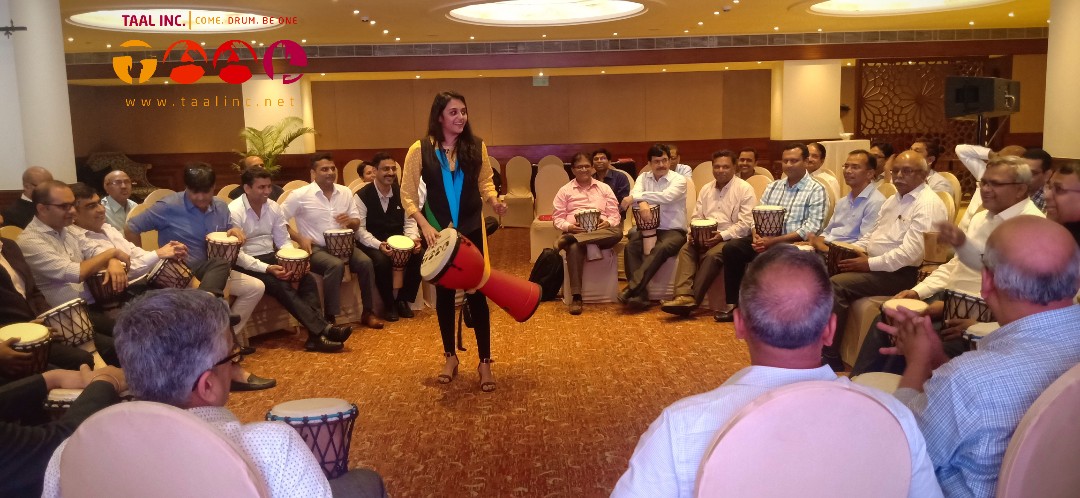How often do we have a conversation with someone in the office lift we don’t know that well? How often do we exchange smiles during Engagement Activities in Office? How often are we not using our cell phones while walking?
I was facilitating a drum circle as a part of Fun Team Building Activities for Work in a company where I saw most of the individuals walk in the circle using their cell phones and take a seat. There was neither any interaction with their colleagues nor with me. They started drumming as they were told to do so. Little did they know that one hour of drumming would get them to look at each other more.
This meant: more smiles and conversations after the session. I could draw similar observations while working with different groups during this Engagement Activity in Office. Drumming provides us the joy of being together, building communication, eye contact and exchange of (my favorite!) smiles.
When we sit in a circle to drum, we can see each other. I often ask people to smile at each other while drumming. While one is drumming in the group, there is no pressure to drum well or professionally. We naturally get into the flow of the group rhythm whether we are playing a rhythm together or just keep the pulse going. The seating arrangement during Fun Team Building Activities for Work reduces pressure and helps ease the participants of the session which in turn, helps in increased eye contact and… (yes, you guessed it…) smiles.
Wth Engagement Activities in Office there is definitely an increase in communication as well. We play rhythm games in a drum circle which helps the participants build communication with people sitting next to them. Fun Team Building Activities for Work comprise of competitive games, where teams are formed and the sportsman spirit of the groups is observed and then there are moments where connections are made on the basis of pain in the hands or not being able to drum. All of this leads to starting a conversation with people sitting next to you or sharing with the facilitator and colleagues.
- Akshata Parekh

Varun is the founder and director of Taal Inc.
The visionary behind the motto
Come. Drum. Be One.
To read more about him Click Here


